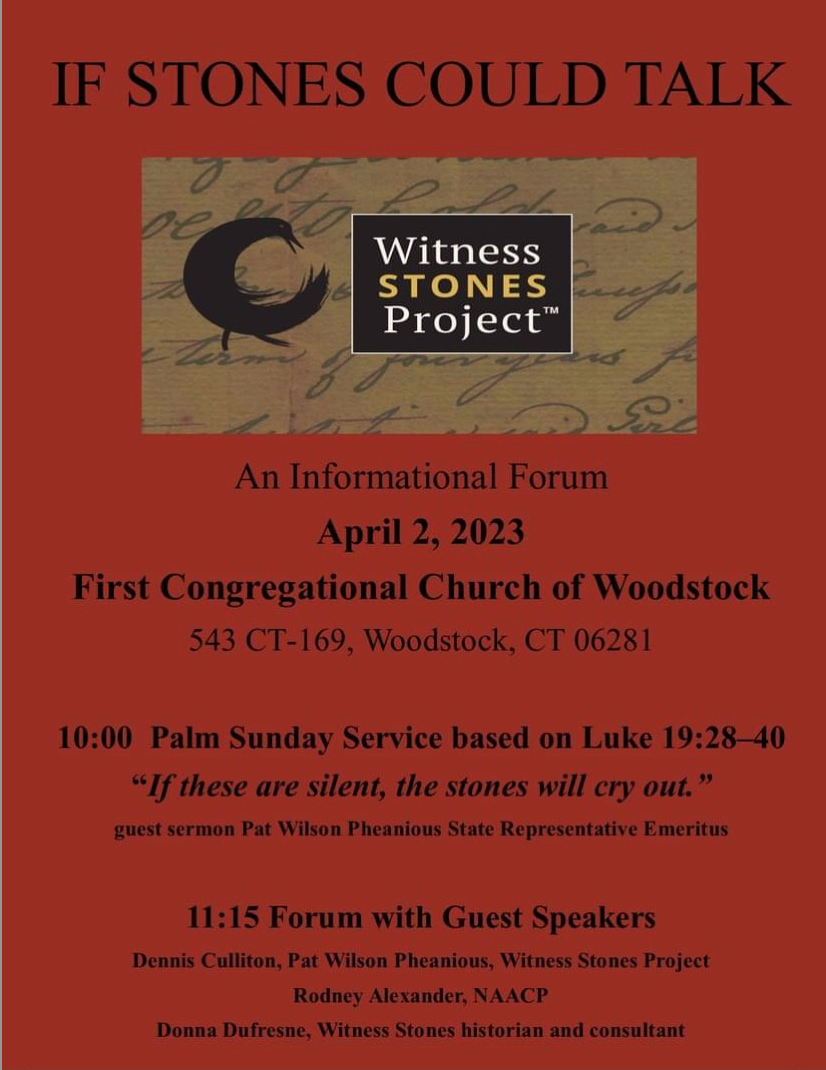Witness Stones Chair delivered the Palm Sunday Sermon at the First Congregational Church of Woodstock. We invite you to watch here.
#WoodstockCT
Join Us in Woodstock

The Witness Stones Project Comes to Camp
By Mike Sherman on Camp Woodstock YMCA
In 1740 the enslaved persons of Ebenezer Lyon, including one named Crumbo, built a stone dam for a grist mill on the outlet stream of Black Pond along what is now called Camp Road. In 1760 the dam harnessed the water to operate the bellows for one of the first known iron-making works in Connecticut; the New Roxbury Iron Works. In 1996 the still-standing stone dam was listed on the National Register of Historic Places. In 2023 Camp Woodstock will begin an educational program with the Witness Stones Project, Inc. which will include the placement of a witness stone at the dam to commemorate the accomplishments of Crumbo and other enslaved persons in their part of the building of America.
During the summer, our leaders-in-training (LIT) will learn about slavery in Connecticut through a program developed by the Witness Stones Project. Three Woodstock alumni, Norma Jean Posocco, Andy Baur, and Michelle Rawcliffe (experienced and gifted teachers) have expressed interest in being trained to teach the counselors of our 15-year-old LITs. The primary goal of the LIT program is to instill character traits into these future leaders to succeed at camp, in their schools, and in their life beyond. They will be equipped to carry what they learn to their schools and communities.
Camp Woodstock is ideally situated for this program. Our property abuts the landowner of the Slave Dam who has agreed to the witness stone’s placement. On our property lie the stone remains of the house of Lieut. James Mason of the Revolutionary War, who operated a carding mill at the dam until 1770. Across Camp Road at the camp entrance, an old woods road used to cart the bog iron to the dam remains. A short mini-bus ride away leads to the old colonial house of Ebenezer Lyon and an ancient cemetery where Crumbo’s skills were used to chisel some of the oldest epitaphs.
These vestiges of the past linked to the Slave Dam will provide interest in the often-overlooked greater story of slavery in America. A story our LITs will better know.


